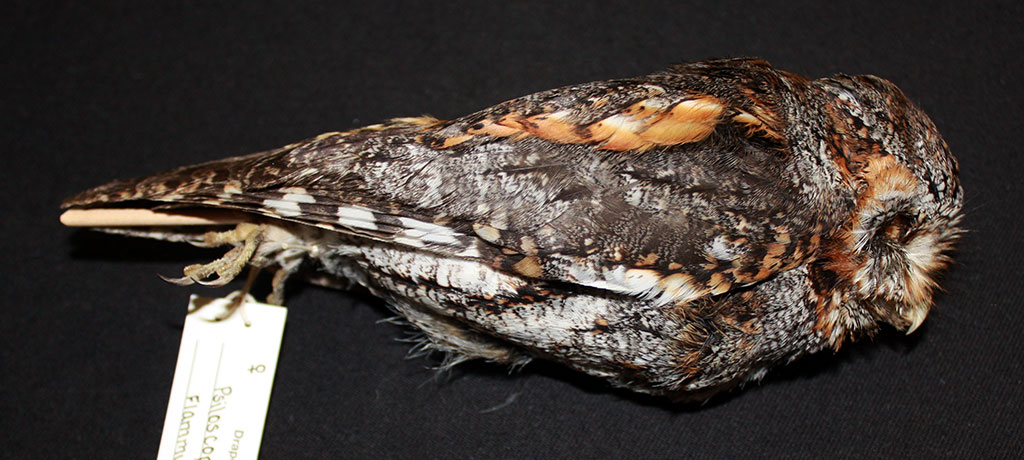Originally featured in Points West magazine in Fall/Winter 2016
Flammulated owl specimen
Natural history museum collections function to preserve a record of life on Earth. Researchers prepare well-documented biological specimens according to standard protocol and deposit them in museum research collections to be studied by scientists from around the world. Each of these specimens contains unique scientific information, and research collections are therefore the most highly valued and carefully conserved materials in natural history museums. In the spring of 2014, this flammulated owl (Psiloscops flammeolus) was found dead in Gallatin County, Montana, outside Yellowstone National Park; it was subsequently transferred to the Draper Natural History Museum for preparation and curation. We prepared it as a traditional museum study skin and deposited it in our research collection to help document the distribution of this species in the Greater Yellowstone Ecosystem.
The small, nocturnal flammulated owl breeds primarily in tree cavities located in mature ponderosa pine and mixed conifer forests in the western United States. These owls leave their breeding grounds in fall and migrate south as far as Guatemala and El Salvador for the winter. Scientists know relatively little about the distribution and status of this species throughout Greater Yellowstone, where it is considered a Sensitive Species due to loss of large snags and forest structural complexity.
Flammulated owl specimen. DRA.304.404
Post 183






